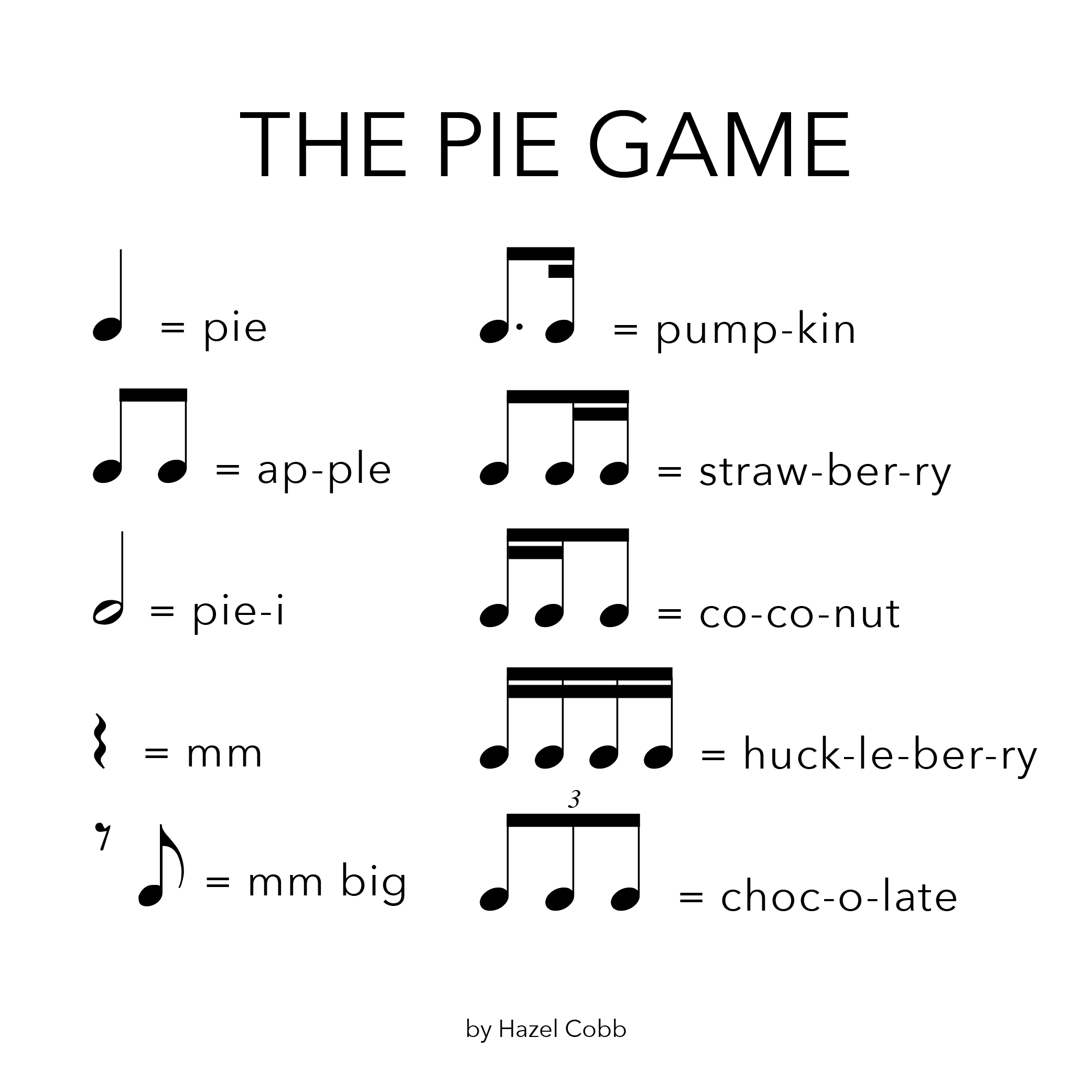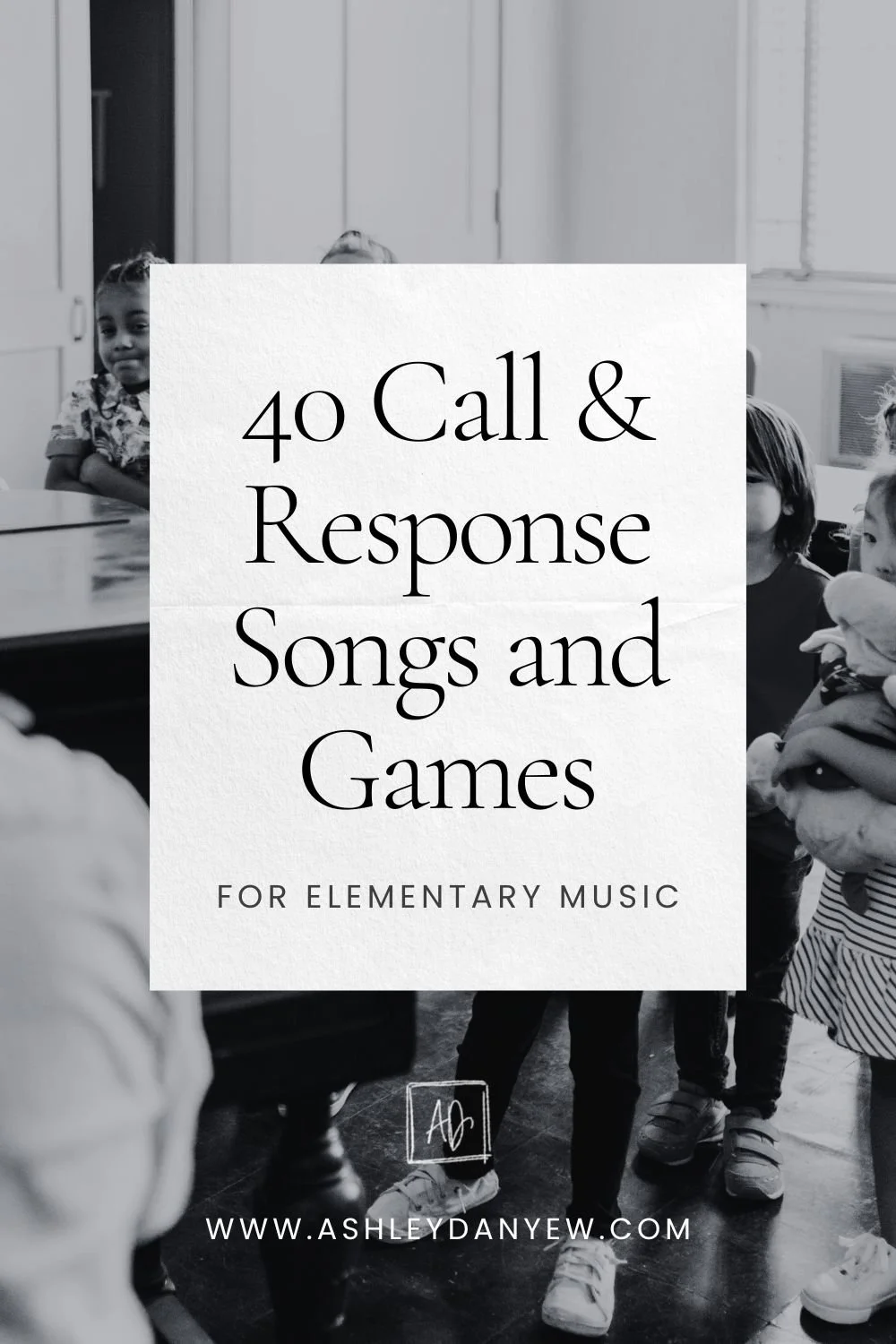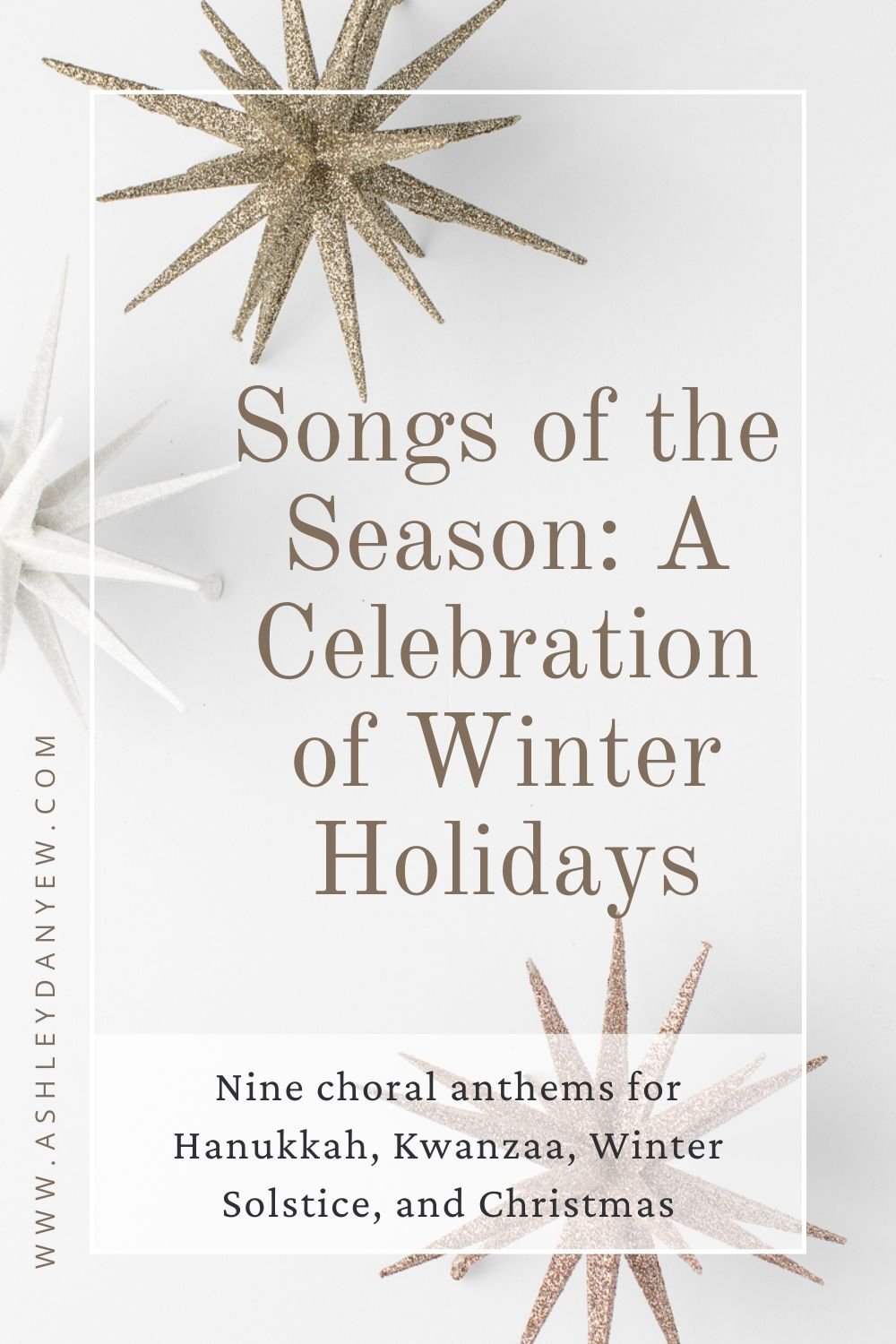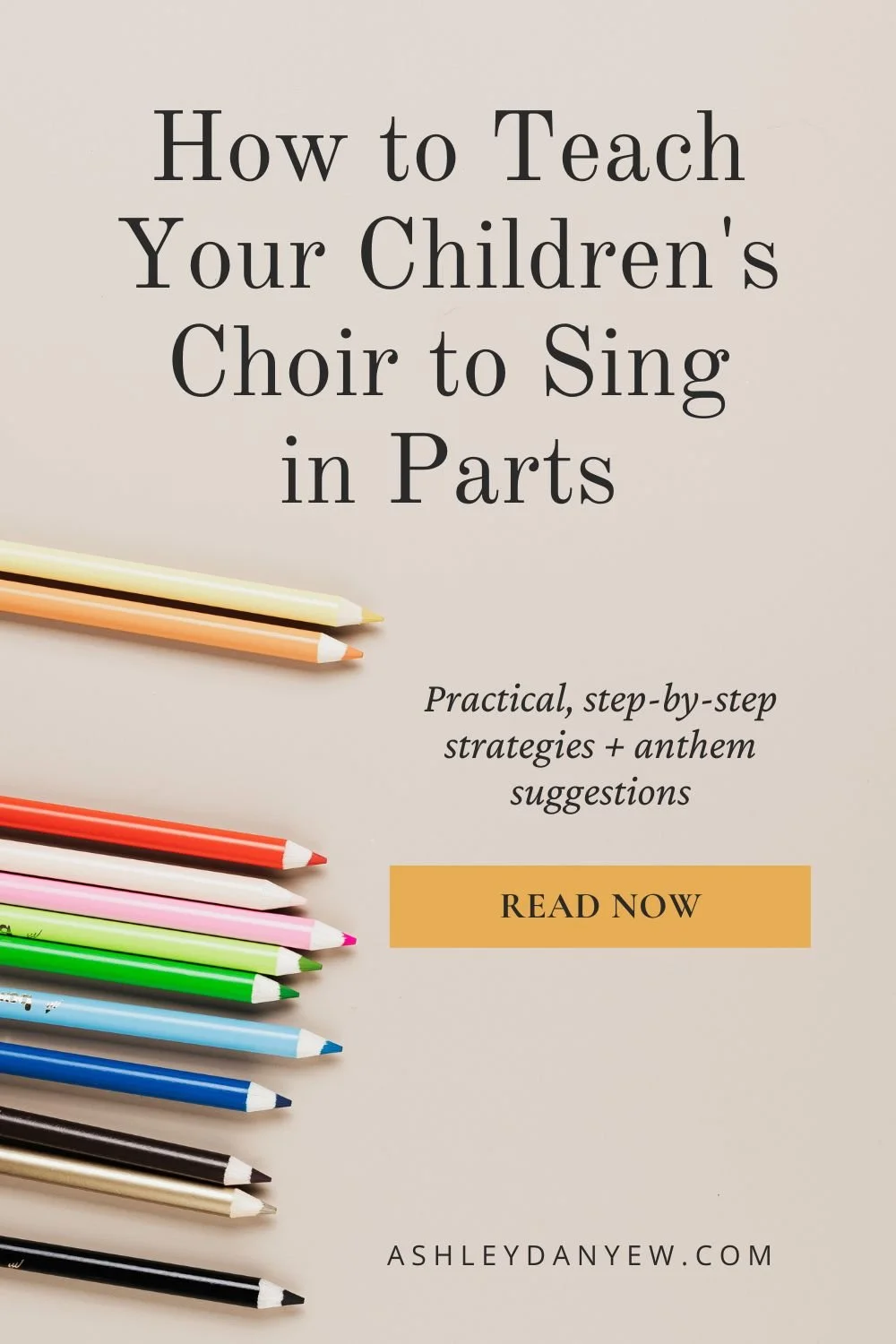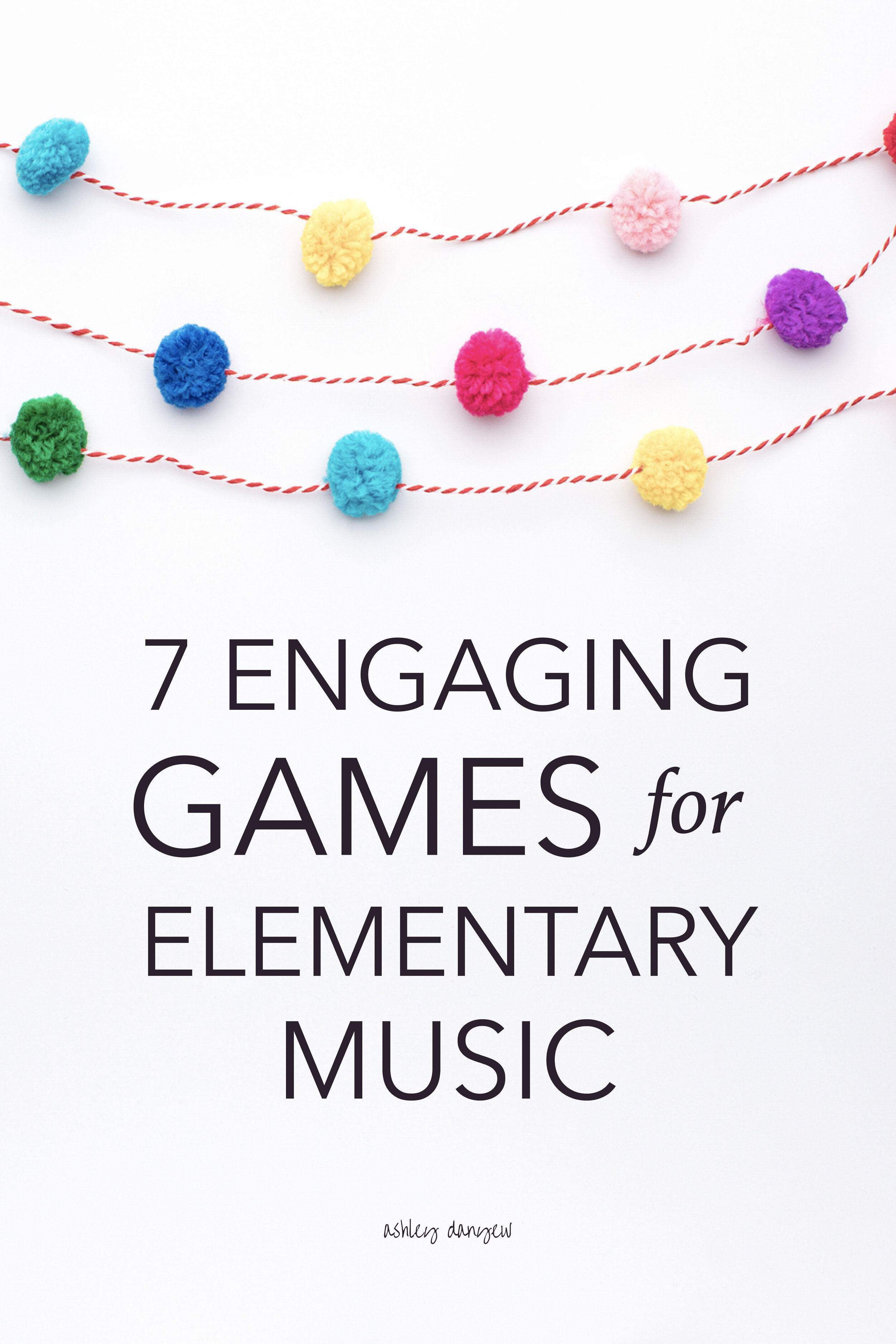Earlier this week, I shared some of my favorite tried-and-true rhythm games and activities for children's choir. Most were focused on keeping the steady beat, moving, listening, improvising, and developing aural skills.
>> Read Tried-and-True Rhythm Games for Children’s Choir (Part I).
Today, I'm adding to the list with fun and engaging rhythm games that focus on rhythmic reading, pattern recognition, composition, and developing musical independence.
As directors and teachers, it's important for us to assess whether or not children are able to respond to, remember, and reproduce a short rhythmic pattern to understand where they are and areas where they need more reinforcement (source).
These activities will help you do just that:
Tried-and-True Rhythm Games
What’s That Pattern?
A fun game for large and small groups that helps develop aural skills, pattern recognition, musical independence, and rhythmic reading. This is a great gathering activity to do before rehearsal!
Have children choose four rhythm pattern cards with similar rhythm patterns (e.g. quarter and eighth notes or quarter rest patterns), laying them out for others to see (if you have a large group, divide children into groups of 4-5). Children (or groups) take turns choosing one pattern of their four to chant out loud (ideally with a neutral syllable such as “bah”) while others (individuals or groups) try to identify it.
For an extra challenge, have children choose eight cards and chant two of their patterns back-to-back.
Rhythm Train
Similar to What's That Pattern? (above), this game helps with pattern recognition, rhythmic reading, and the development of aural skills.
Choose three rhythm pattern cards that are similar and hold up for all to see. Choose one pattern to clap or chant. If the children correctly identify the pattern, they earn the card. If they are incorrect, you earn the card.
Keep track of how many cards you've earned by creating rhythm trains (one for you, one for them) using these free printable engine and caboose cards from Color in My Piano. This is also great for group composition and introducing or reinforcing the concept of meter. (source)
Whisper Rhythms
This is a combination of Pass a Pattern (see previous post) and one of the Pie Game variations (below).
Place rhythm pattern cards in a basket or bowl and pass around the circle. Have children take turns drawing a card and whispering the pattern to their neighbor. Once the pattern has gone all the way around the circle, the child places the card face up on the floor and claps the pattern and everyone echoes back. The next child repeats this sequence, but when they place their card face up, they clap both patterns and everyone echoes back. This continues around the circle, each child adding a pattern to the ones before. (source)
Rhythm Bingo
For a calmer, quieter activity, consider playing a quick round of rhythm bingo. Here is an easy, printable version from Susan Paradis.
Tea Coffee Coffee Tea
Introduce and compare quarter notes and eighth notes with familiar words: "tea" for quarter notes and "cof-fee" for eighth notes. Create your own rhythmic series using these two words (4-8 beats in length). Develop musical independence in your singers by dividing them into two or three groups and having them chant different rhythmic series at the same time. (source)
Give your singers an opportunity to compose by asking them to create a rhythmic series for the group to chant together. For older choirs, ask for a few volunteers to compose and chant their series (as solos, duets, trios, or quartets) for the rest of the choir.
Pie Game
Created by pianist Hazel Cobb, the basic concept behind the Pie Game is to read rhythmic notation with words (instead of numbers, ta and ti-ti, or other counting method):
Using a regular set of rhythm cards, the Pie Game helps develop listening skills, musical independence, and rhythmic reading, and gives children an opportunity for improvisation and composition. The possibilities are endless!
Here are a few ideas:
Wild Card Challenge
Have children work together to create a rhythmic series (eight measures, or two phrases). Keeping a steady beat, children chant the rhythm together. After each successful repetition, flip one card over to the blank side (I call this a “wild card”). Have children take turns creating their own patterns in these spots or improvise a pattern all at the same time.
Sight-reading
Practice sight-reading the rhythm of a new anthem with pie syllables. Have everyone keep the steady beat together.
Two-Part Tango
Have children arrange cards in two rows. Chant the patterns together, then divide into two groups, chanting different lines at the same time. This is a great way to prepare young singers for 2-part anthems!
What kind of pie?
Place cards in a box or bag. Pass around the circle and have children take turns drawing a card (discretely) and clapping the rhythm for the others (without chanting the words). Have the others in the circle respond by clapping the rhythm back with the words.
Rhythm Memory (like the card game)
Use two identical sets of rhythm cards (so each card has a match!) and arrange in rows, face down. Have children take turns flipping cards over to find a match (or work with a partner).
Rhythm Sticks
There are lots of ways to incorporate rhythm sticks (or any rhythm instruments for that matter) into your rehearsals. Tap the steady beat while listening to a piece of music. Practice listening for subdivisions by having half of the group play half notes and the other half play quarter notes (or half play quarter notes and half play eighth notes). Read rhythm patterns or echo back by tapping the rhythm with sticks instead of clapping. Create a rhythmic ostinato to accompany one of your anthems.
Also, take a look at these posts:
11 ways to use rhythm sticks
Sing & Play: How to Use Instruments With Your Children’s Choir
Rhythm Relay
A fast-paced rhythm game that's a cross between telephone (or Pass a Pattern, as mentioned previously) and a relay race.
Divide children into two rows (sitting, facing each other). Place a beanbag on the floor in between the two lines. Show a one-measure rhythm pattern to the person at the end of each line (try letting them read it for themselves rather than chanting it for them). When you say, "Go!" have children squeeze their neighbor's hand with the rhythm, passing it down the row.
Once the child at the end of each row receives their pattern, they must race to pick up a bean bag and clap the pattern out loud. If correct, their team earns a point. If incorrect, the other team earns a point. The first team to earn five points wins! (source)
What are your favorite rhythm games and activities for choir? I'd love to hear your ideas!
P.S. You might also like these posts:
Tried-and-True Rhythm Games for Children's Choir (Part I)
15 Singing Games for Children's Choir
7 Fun Games for Children's Choir
Clap Your Hands: 16 Clapping Games for Children's Choir
Fun, Easy Gathering Activities for Children's Choir



